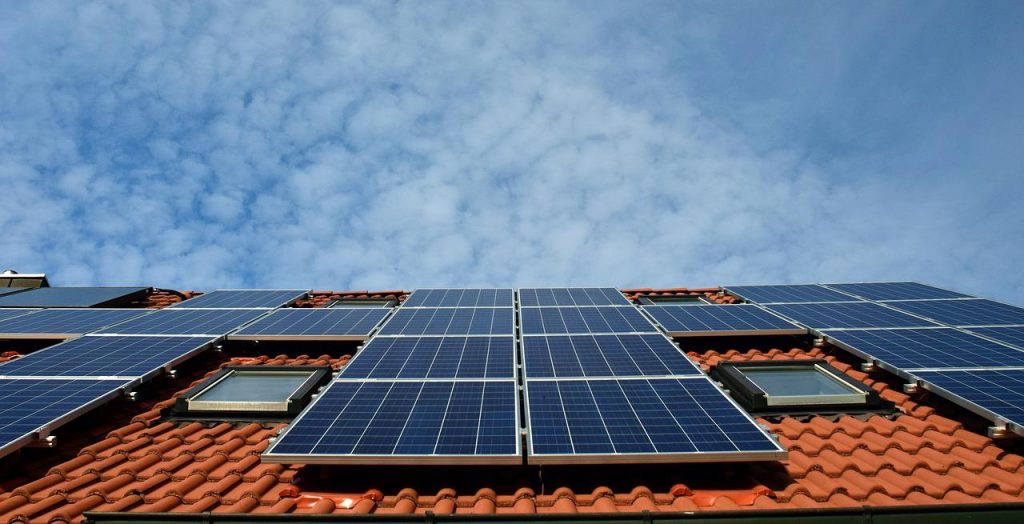
GUEST ARTICLE: The Future of Carbon-Neutral Buildings – Trends and Predictions
As the world grapples with the realities of climate change, the construction industry has a significant role to play in reducing carbon emissions. In the UK, buildings contribute to 33% of the greenhouse gas (GHG) emissions and 40% of the global energy consumption. This article, from Paul Bullard, Product Director at SFG20, explores the concept of carbon-neutral buildings, current trends, future predictions, and the role of sustainable building practices in achieving carbon neutrality…
Understanding Carbon-Neutral Buildings
In a carbon-neutral building, energy efficiency is paramount. Architects and engineers use principles such as passive solar design, natural ventilation, and high-efficiency insulation.
In addition to energy-efficient design, carbon-neutral buildings also use renewable energy technologies to generate electricity. This can include solar panels, wind turbines, and in some cases, geothermal systems. The electricity generated by these systems can be used to power the building’s lighting, heating, and cooling systems, as well as any appliances or equipment in the building.
Current State of Carbon Emissions in the Construction Industry
In the UK, the construction industry is a significant contributor to carbon emissions. The embodied carbon of a building, which includes the carbon emissions associated with the extraction, production, and transportation of construction materials, as well as the carbon emissions from the construction process itself, can be equivalent to 20 years’ worth of its operational carbon emissions.
Trends in Carbon-Neutral Buildings
The drive towards carbon-neutral buildings is gaining momentum, with several key trends shaping the future of the built environment. These trends reflect a growing commitment to sustainability, energy efficiency, and technological innovation.
1) Renewable energy sources
Solar panels and wind turbines are becoming a common sight on buildings across the UK. As the cost of these technologies continues to fall, they offer long-term cost savings, making them an increasingly attractive option for building owners and operators.

2) Energy-efficient design
Architects and engineers are using principles such as passive solar design and high-efficiency HVAC systems to minimise energy consumption. Passive solar design takes advantage of the sun’s energy for heating and cooling, while high-efficiency HVAC systems use less energy to provide the same level of comfort.
3) Sustainable building materials
These materials, which include recycled or reclaimed materials, can significantly reduce a building’s embodied carbon – the carbon emissions associated with the production, transport, and disposal of building materials.
By choosing sustainable materials, builders can reduce the environmental impact of their projects while often also improving the performance and aesthetics of their buildings.
4) Smart technology integration
Smart thermostats, energy management systems, and other technologies can optimise a building’s heating, cooling, and lighting systems, further reducing energy consumption. These technologies can also improve comfort and convenience for building occupants.
Future Predictions
The landscape of the UK’s built environment is set to undergo a significant transformation. The drive towards carbon neutrality is expected to accelerate, spurred by technological advancements, evolving government policies, and heightened public awareness of climate change.
The government’s Ten Point Plan for a Green Industrial Revolution and Net Zero Strategy provides a roadmap for this transition, outlining strategies for improving energy efficiency, promoting low-carbon heating solutions, and encouraging the construction of energy-efficient new homes.
Moreover, the decarbonisation of the UK’s electricity grid and the development of a low-carbon hydrogen sector are set to make it easier for buildings to reduce their carbon footprint.
At the same time, investments in carbon capture usage and storage (CCUS) technologies could further help offset emissions from buildings and industrial processes.
Beyond government initiatives, we anticipate a growing number of businesses and individuals investing in carbon-neutral buildings. As energy prices continue to rise, buildings that generate their own green electricity can offer a financially attractive proposition.
The public sector is leading by example, with the government committed to achieving net-zero emissions from its operations by 2050. This sets a precedent for the private sector, demonstrating the feasibility and benefits of carbon-neutral buildings.
Latest news

26th July 2024
Enfield Speciality Doors completes world-class project for Atlas Copco HQ
A rundown office and warehouse building completely transformed into a modern headquarters for Atlas Copco has been fitted with more than 120 internal fire doors from Enfield Speciality Doors.
Posted in Access Control & Door Entry Systems, Articles, Building Industry News, Building Products & Structures, Building Systems, Case Studies, Doors, Interior Design & Construction, Interiors, Posts, Restoration & Refurbishment, Retrofit & Renovation, Security and Fire Protection, Sustainability & Energy Efficiency, Timber Buildings and Timber Products, Wooden products
26th July 2024
Abloy UK launches new white paper
Abloy UK, a leading provider of security and access control solutions, has launched a new white paper.
Posted in Access Control & Door Entry Systems, Architectural Ironmongery, Articles, Building Industry News, Building Products & Structures, Building Services, Doors, Facility Management & Building Services, Health & Safety, Information Technology, Innovations & New Products, Publications, Research & Materials Testing, Security and Fire Protection
26th July 2024
MCRMA Member Profile: David Roy, Director of Roofconsult
David Roy of MCRMA member company Roofconsult has more than 50 years’ experience to draw upon working in the building envelope sector and a unique perspective on how it has changed in that time.
Posted in Articles, BIM, Infrastructure & CAD Software, Building Associations & Institutes, Building Industry News, Building Products & Structures, Building Services, Building Systems, Cladding, Information Technology, Restoration & Refurbishment, Retrofit & Renovation, Roofs, Walls
26th July 2024
Strand: Enhancing Door Functionality and Safety
Craig Fox, Sales Director for Strand Hardware, outlines how door industry professionals might apply door limiting stays…
Posted in Architectural Ironmongery, Articles, Building Industry News, Building Products & Structures, Building Services, Doors, Facility Management & Building Services, Health & Safety, Restoration & Refurbishment, Retrofit & Renovation
 Sign up:
Sign up: